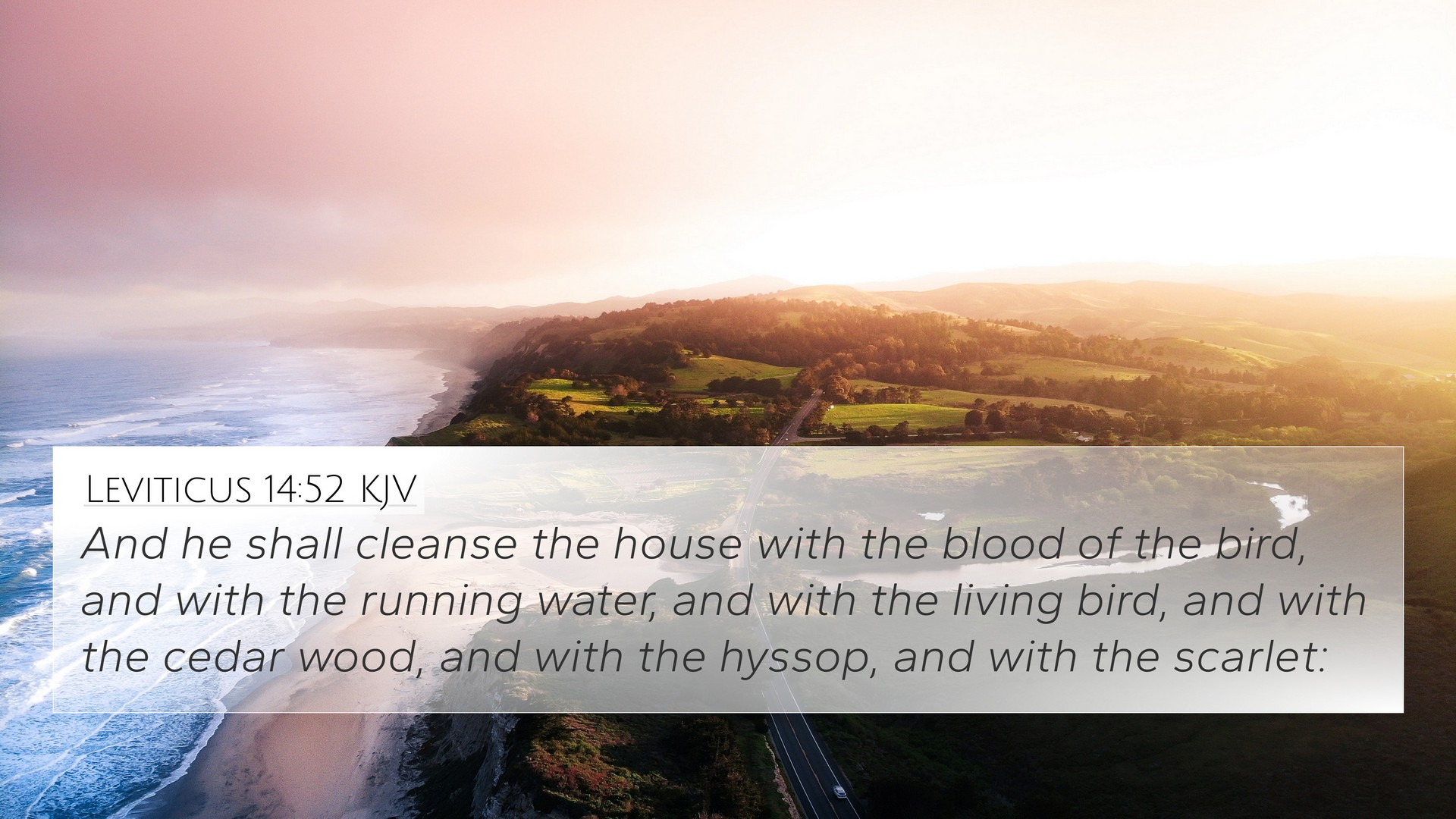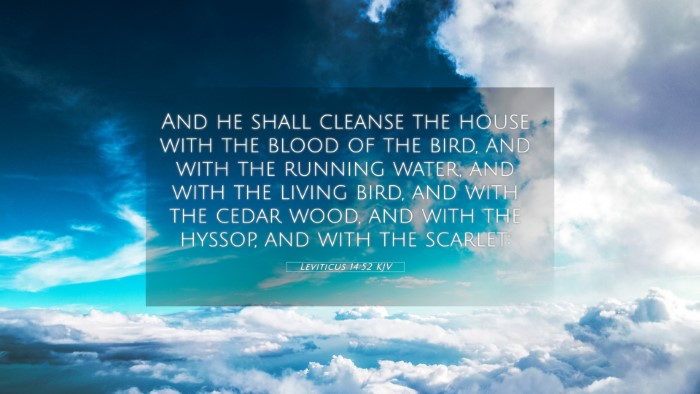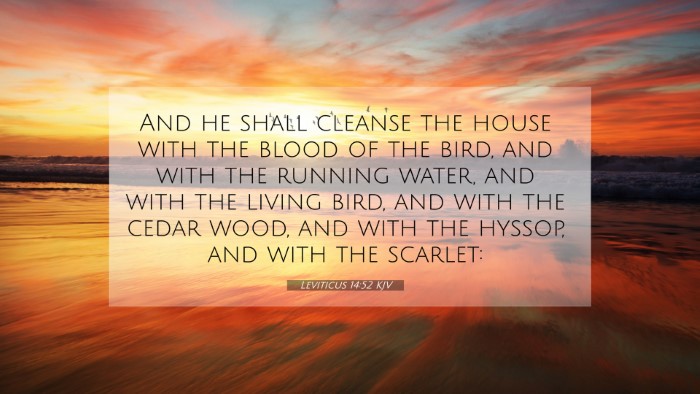Understanding Leviticus 14:52
Leviticus 14:52 states: "And he shall cleanse the house with the blood of a bird, and with the fresh water, and with the living bird, and with the scarlet, and with the hyssop." This verse is part of a broader ritual concerning the cleansing of a house affected by leprosy, symbolizing both physical and spiritual purification.
In seeking a deeper understanding of this passage, we can glean insights from well-respected public domain commentaries. Below is a synthesis of interpretations from Matthew Henry, Albert Barnes, and Adam Clarke.
Insight from Commentaries
-
Matthew Henry:
Henry emphasizes the importance of cleansing practices as a sign of the holiness required in God’s presence. The rituals serve to illustrate God’s desire for cleanliness, both physically and spiritually, reflecting His character of purity.
-
Albert Barnes:
Barnes notes the symbolic nature of the actions described. The use of blood in cleansing ritual signifies atonement for sins, connecting this Old Testament practice with the sacrificial system that points towards Christ's ultimate sacrifice in the New Testament.
-
Adam Clarke:
Clarke adds contextual background on scoffing at lepers and impure objects, asserting that this procedure signifies God’s provision for healing and restoration, demonstrating His mercy and willingness to cleanse not just the physical structures but also the hearts of the people.
Bible Verse Cross-References
Leviticus 14:52 offers foundational insights that resonate with numerous other scriptures, creating a rich tapestry of biblical theology. Here are several cross-references that strengthen its themes:
- Leviticus 14:6-7 – Details regarding the sacrificial bird and the notion of cleansing.
- Hebrews 9:22 – Links the sacrificial system to the necessity of blood for atonement.
- Matthew 8:2-3 – Jesus’ cleansing of a leper symbolizes the fulfillment of Levitical law.
- Psalm 51:7 – The imagery of being cleansed and made new is echoed here.
- 1 John 1:7 – Affirms the concept of being cleansed from all sins through the blood of Jesus.
- Exodus 12:22-23 – The blood on the doorposts serves a protective and purifying purpose.
- Hebrews 10:22 – The call to approach God with a sincere heart highlights the cleansing aspect of sacrifice.
Connections Between Bible Verses
The thematic connections between Leviticus 14:52 and other scriptures highlight the rich inter-Biblical dialogue regarding cleansing, sacrifice, and atonement:
- Cleansing from Sin: The cleansing of the leprous house connects with the broader biblical theme of God seeking to cleanse His people from sin.
- Holiness Standards: Both Leviticus 14 and New Testament passages advocate high standards of holiness required of God’s people.
- Symbol of Sacrifice: The blood used in cleansing rituals directly foreshadows Christ’s redemptive work.
Cross-Referencing Biblical Texts
Using tools for bible cross-referencing can enhance your study. Here’s a guide to assist:
- Familiarize yourself with a reliable bible concordance to find related verses.
- Utilize a bible cross-reference guide to deepen your understanding of specific connections.
- Engage in cross-reference Bible studies to discover thematic links across scripture.
Exploring Biblical Themes
Identifying connections between the Old and New Testaments can illuminate greater truths. By exploring themes in Leviticus, readers can draw parallels with Jesus' ministry and teachings. For example:
- New Birth: The act of cleansing mirrors the transformative aspect of being born again as described in John 3.
- Spiritual Purity: Just as the physical purification was necessary, spiritual purity through Christ is essential for fellowship with God.
Conclusion
Leviticus 14:52 encapsulates the continual biblical narrative of cleansing, atonement, and the holiness demanded by God. By exploring bible verse connections using the principles of cross-referencing, believers can enhance their understanding and deepen their faith. This systematic approach not only reveals the interconnectedness of scripture but also invites theological reflection and personal application.


